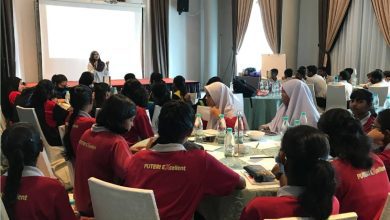

by Jack Foo
According to News Medical, Thalassaemia can affect approximately 4.4 of every 10,000 live births throughout the world. In Malaysia, anywhere between 3-8% of the population could have this disorder.
According to Dr Too Jun Kin, Thalassaemia is a blood disorder distinguished by abnormalities in red blood cell (RBC)’s size and shape because of abnormal haemoglobin production. It can be inherited from parents because it is a genetic disorder.
Dr Too, a Consultant Paediatrician at Pantai Hospital, stresses that having awareness of the disease is quintessential in assuring that patients know how to live with it and how to avoid it. Moreover, this becomes more significant when patients realize it can affect the livelihoods of their future generation as well.
There are various types of Thalassaemia and the two types of Thalassaemia most commonly found in Malaysia are;
- AlphaThalassaemiawhereby the body has difficulties producing alpha globin 2. Beta Thalassaemia whereby the body has difficulties producing beta globin
The most severe form of it is Beta Thalassaemia Major (Transfusion Dependent Thalassaemia, TDT) which causes anaemia. As genes are essentially the “blueprint” of our physical makeup, it doesn’t take a rocket scientist to know that Thalassaemia, a genetic disorder, can affect how a person looks and feel and their outlook on life. Parents who are both Beta Thalassaemia carriers may have a 25% chance having an offspring with Beta Thalassaemia Major (Transfusion Dependant Thalassaemia, TDT) and a 50% chance of having offsprings who are carrier (As illustrated).
Adversely, babies born with Beta Thalassaemia major often appear healthy at birth, but symptoms may start to appear any time after 6 months to 1 year of life. However, usually they are detected at toddler age group. Regular blood transfusions are usually required for this variant however this may lead to excessive iron in the body which can be extremely toxic at high amounts as Thalassaemia Major (TDT) patients often requires iron chelation therapies. Alternatively, other symptoms of Beta Thalassaemia major can include fatigue, pale appearance, facial bone deformities and stunted growth. Other than blood transfusions, chelation therapy and bone marrow transplants are additional means to treat the disorder.
Due to the undesirable consequence of the disorder, Dr Too advises everyone to understand and familiarize themselves with the disorder as well as getting their blood checked out. Many Thalassaemia cases can be prevented by simply having proper family planning, consulting a qualified doctor/Paediatrician and having pre-natal check-ups. Awareness, in all its forms, is key in combating Thalassaemia.
Dr Too received his MD from Universiti Putra Malaysia in 2006 and a Master of Paediatrics from University Malaya in 2015.
“It’s not about treatment” remarked Dr Too, “It’s about awareness because if we remove the disease from us then we don’t have to treat it in the first place.”
Dr Too Jun Kin
Consultant Paediatrician
MD (UPM), M. MED (Paeds)(UM)
Pantai Hospital Ipoh, Suite 310, 3rd Floor
05-5400372
toopaediatrics@gmail.com


